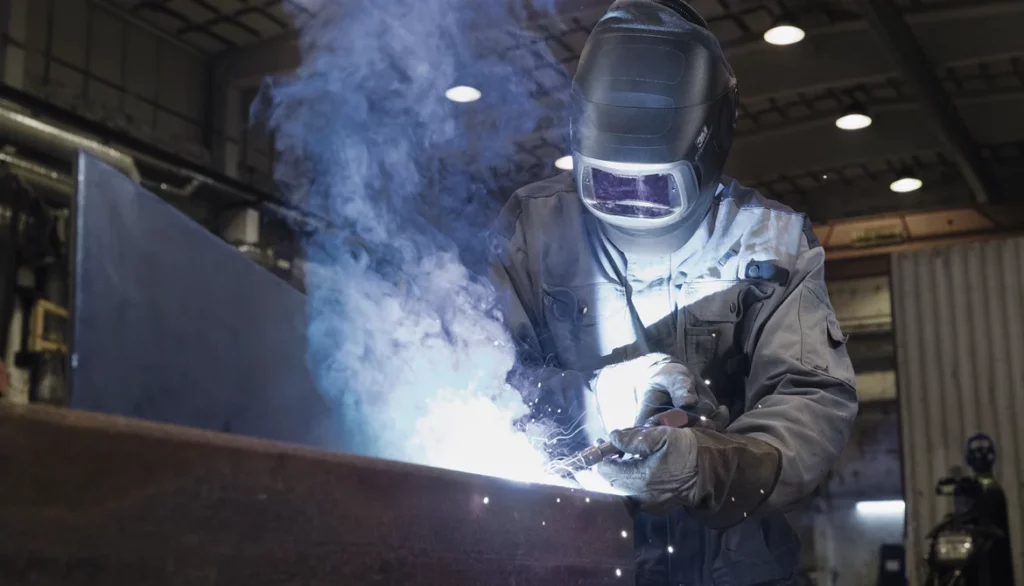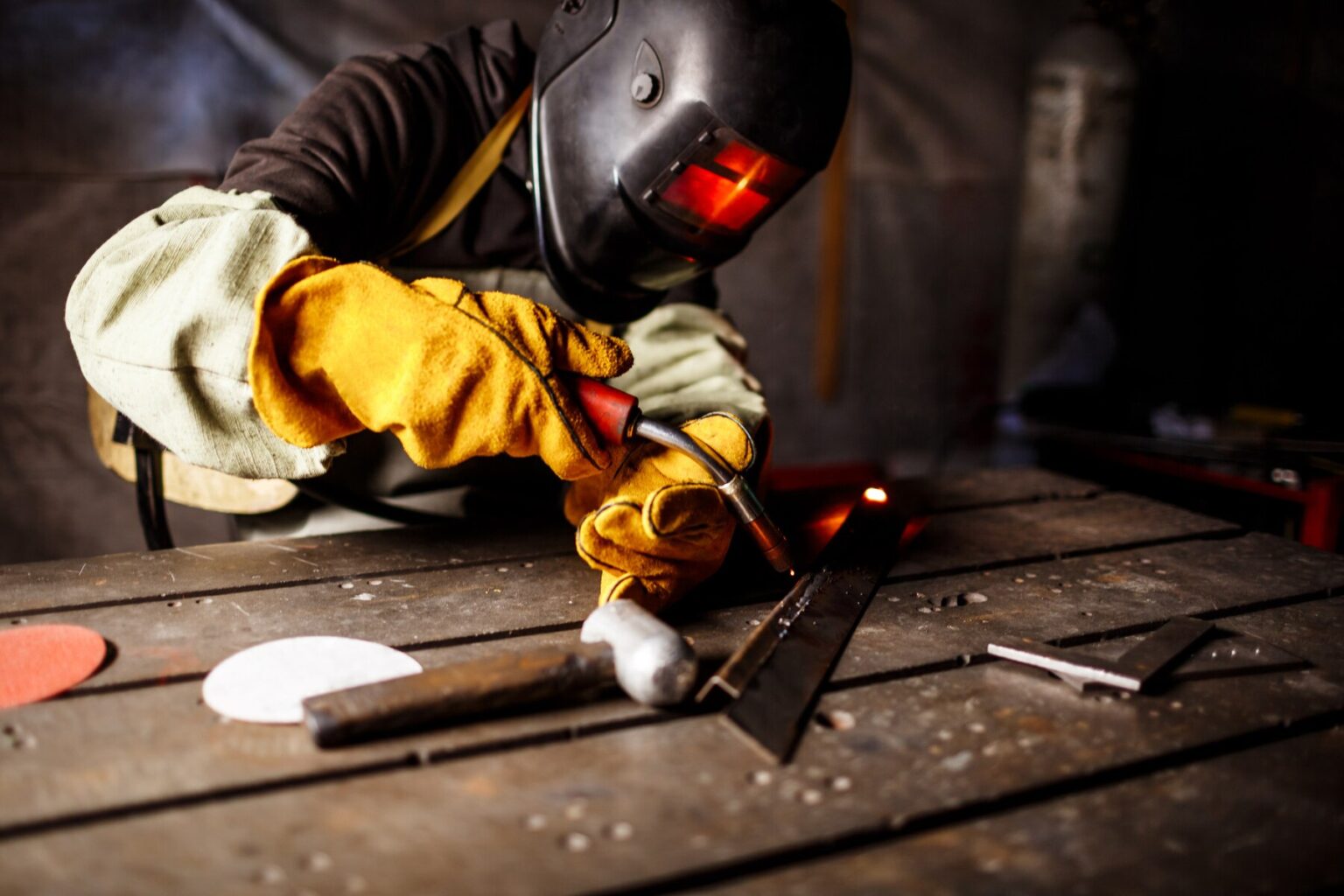Choosing the right welding helmet can feel challenging, but this guide will help you make the best decision. By the end, you’ll understand essential features like auto-darkening vs. passive lenses, lens shades, and comfort, and you’ll be able to select a helmet that fits your needs perfectly. We’ll also introduce trusted suppliers to ensure you find quality options.
Once you’ve chosen your helmet, we’ll guide you on selecting additional protective gear like gloves and goggles, so you’re fully equipped for your next project. Let’s get started!
Key Features to Consider When Buying a Welding Helmet
Understanding the key features of a welding helmet is essential for making an informed purchase that meets your safety and work requirements.
1. Auto-Darkening vs. Passive Lenses
Passive helmets have a fixed-shade lens, while auto-darkening helmets adjust the shade based on the light intensity. Auto-darkening helmets are more versatile and preferred by many professionals for their convenience and reduced need to flip the helmet up and down.
Learn more in Auto-Darkening vs. Passive Welding Helmets.
2. Lens Shade and Clarity
The lens shade determines how much light the helmet blocks. Commonly, shades 9-13 are used for welding. Higher-quality helmets also offer better optical clarity, reducing strain during long welding sessions.
Understand the importance of lens shades in Understanding Lens Shades and Their Importance.
3. Comfort and Fit
A well-fitted helmet enhances comfort and ensures you can work efficiently. Adjustable headgear, lightweight materials, and padded interiors enhance comfort, particularly during prolonged use. Test the fit before purchase to avoid long-term discomfort.
Common Uses and Applications of Welding Helmets

Welding helmets are primarily used in:
- Construction: For building frameworks and infrastructure, such as metal welding for structural supports, welding beams, and assembling scaffolding.
- Manufacturing: In factories for assembling and fabricating metal parts, including creating machinery components, welding pipes, and fabricating custom structures.
- Automotive: Repairing and manufacturing vehicles, including bodywork welding, chassis repairs, and welding exhaust systems.
- Warehousing and Logistics: Maintaining equipment and structures, such as repairing storage racks, welding heavy-duty shelving, and maintaining forklifts.
Top European Welding Helmet Suppliers
Choosing a supplier with a proven track record ensures product quality and reliable customer support. Here are some top European suppliers:
These suppliers provide a variety of helmets suitable for different welding tasks, ensuring durability and compliance with safety standards.
Related Safety Equipment
Pairing your welding helmet with complementary safety gear enhances protection and efficiency. Consider these related categories:
- Welding Goggles: Ideal for tasks requiring lighter protection.
- Welding Gloves: Essential for protecting hands from heat and sparks.
- Fire-retardant Jackets: Shields the upper body from heat and debris.
- Fire-retardant Work Trousers: Protects lower limbs during welding tasks.
Discover additional safety guides like How To Choose Safety Glasses and How To Choose The Right Welding Glasses.
Popular Types of Welding Helmets
| Type | Best For | Key Features |
| Auto-Darkening | Frequent adjustments in light intensity | Variable shade, sensors |
| Passive | Consistent welding with fixed intensity | Fixed shade, affordable |
| Lightweight | Long working hours | Lightweight materials, compact size |
| High-Visibility | Precision welding tasks | Advanced optics, wide view |
When deciding which type suits your needs, evaluate your work environment, the duration of tasks, and whether flexibility or specialized features are most important for your safety and efficiency.
Conclusion
We hope this guide has helped you navigate the key factors in choosing the right welding helmet, from lens options to comfort features. Whether you’re working in construction, manufacturing, or automotive tasks, we’re here to support your safety and productivity.
Explore our Welding Helmets collection, featuring trusted brands like Bolle Safety, Skydda, Portwest, and Juha Rantanen, all easily accessible with just a click.
Ensure a comprehensive safety setup by pairing your helmet with other protective gear, such as Welding Gloves and Fire-retardant Jackets.
Have questions or need assistance in selecting the perfect helmet? Reach out to us anytime—we’re here to ensure your safety and satisfaction with every purchase.
– The Droppe Team
Frequently Asked Questions
Look for helmets with adjustable settings or those specifically designed for your welding type, such as MIG, TIG, or Stick.
Yes, look for helmets that meet ANSI Z87.1 or EN 379 standards for optimal safety and protection.
With proper care, a high-quality helmet can last several years, depending on usage and maintenance.
Yes, many helmets offer replaceable lenses, which helps extend the lifespan of the helmet.
Yes, but if you’re working outdoors, make sure the helmet offers adequate protection from bright sunlight and changing light conditions.

















